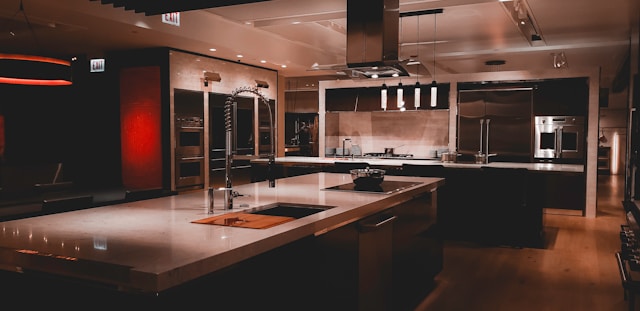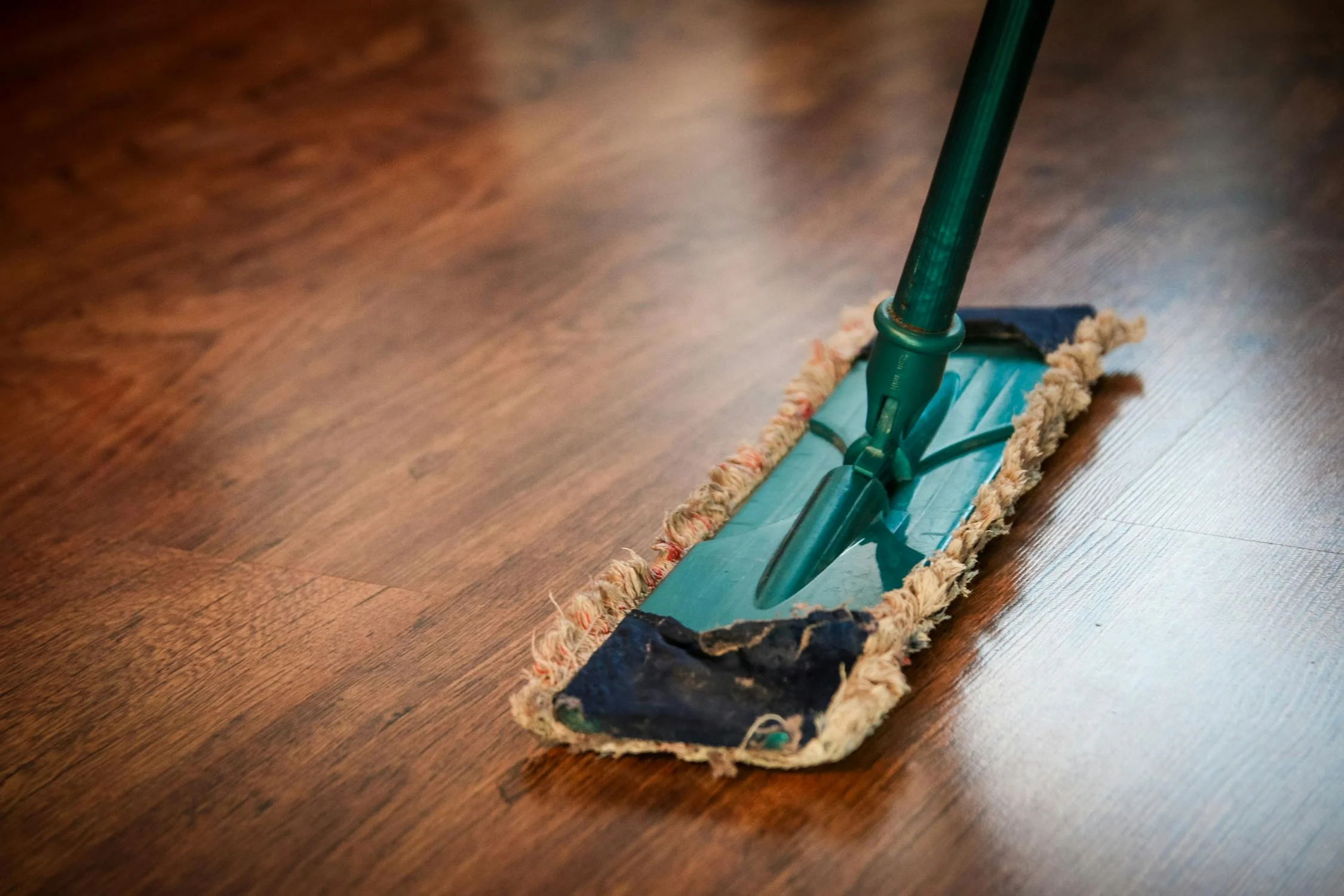When you’re tackling post-construction cleaning in your newly remodeled kitchen, you’ll need a systematic approach that starts with proper dust containment and HEPA filtration to protect your health and new surfaces. Your cleaning process should unfold in clear stages, beginning with debris removal and progressing to detailed surface cleaning while using appropriate protective materials for different finishes. You’ll want to pay special attention to preserving your new cabinets, countertops, and fixtures by using non-abrasive cleaning methods and manufacturer-recommended products that won’t compromise their appearance or durability.

Pre-Cleaning Safety & Planning
You’ll need to start with a thorough walk-through of your newly remodeled kitchen to spot any debris, assess dust accumulation, and identify potential safety risks. Before cleaning begins, install containment barriers using heavy-duty plastic sheeting and zipper doors while protecting floors from damage during the cleanup process. Your cleaning team should wear proper PPE including masks, protective eyewear, gloves, and slip-resistant footwear to guarantee safe working conditions throughout the post-construction cleanup.
Before cleaning begins, perform a walk-through to identify debris, dust levels, and safety hazards. Set up containment with heavy-duty plastic sheeting and zipper doors, protect floors, and ensure proper airflow. Equip your team with PPE such as masks, gloves, goggles, and slip-resistant shoes to create a safe, controlled environment
Safety and preparation form the foundation of successful post-construction kitchen cleaning. Before you release your inner clean freak, take a thorough walk-through – you’ll want to spot those sneaky dust bunnies and potential hazards. For effective dust control after renovation, seal off the area with plastic sheeting and zipper doors. Surface protection during cleaning starts with proper PPE – don’t forget those goggles, unless you enjoy eating sawdust!
Staged Cleaning Approach
You’ll want to tackle post-construction kitchen cleaning in three distinct phases for the best results. Begin with rough cleaning to remove large debris and vacuum with HEPA filters, then move to detailed cleaning of all surfaces working from ceiling to floor. Finally, after allowing time for remaining dust particles to settle, perform a thorough touch-up cleaning to guarantee your kitchen is completely ready for use.
Use a three-step process: Start with rough cleaning by removing debris and vacuuming with HEPA filters. Follow with detailed cleaning of surfaces from top to bottom—walls, cabinets, fixtures, and floors. Finish with a touch-up session after dust settles, ensuring the space is move-in ready and residue-free
The three-step cleaning process guarantees a thorough post-construction cleanup of your remodeled kitchen. First, tackle the chaos with rough cleaning and HEPA air scrubbers to banish construction dust. Next, channel your inner perfectionist for detailed cabinet cleaning post-construction, working top to bottom. Finally, after the dust settles (literally), perform one last sweep for any sneaky particles that dared to remain.
Dust Control Techniques
Protect your newly remodeled kitchen from harmful construction dust by using HEPA-equipped tools and setting up containment barriers with zip walls. You’ll want to run air scrubbers and clean all vents thoroughly to eliminate airborne particles that could settle on your fresh surfaces. Instead of dry sweeping, which kicks up dust, use vacuum cleaners and damp cloths to effectively trap and remove construction debris from your space.
Use dust extractors on tools and set up containment zones with zip walls. HEPA air scrubbers and vent cleaning help eliminate airborne particles. Avoid dry sweeping or techniques that stir dust—always vacuum and wipe with damp cloths to capture particles effectively
Controlling construction dust requires a systematic approach using specialized equipment and proper containment methods. You’ll want to establish zip wall dust containment barriers to create clean zones, while HEPA air scrubbers work their magic filtering those pesky particles. Skip the broom dance – it just sends dust flying! Instead, grab your vacuum and non-abrasive cleaning solutions for a thorough wipe-down that captures debris.
Surface Protection & Materials Care
When you’re cleaning up after a kitchen remodel, you’ll want to protect your new surfaces by covering them with plastic sheeting, kraft paper, or protective film before starting the cleanup process. You should only use soft microfiber cloths and gentle, non-abrasive cleaners to preserve delicate finishes on cabinets, countertops, and fixtures. Before applying any cleaning products, make sure to check your manufacturer’s care guidelines to avoid damaging your new kitchen materials with harsh chemicals.
Cover new finishes with plastic, kraft paper, or film to prevent scratches and stains during cleanup. Clean delicate surfaces with soft microfiber cloths and non-abrasive cleaners. Avoid harsh chemicals that could damage cabinetry, countertops, or fixtures. Always check manufacturer care guidelines
The careful protection of newly installed kitchen finishes serves as a critical first step in post-construction cleaning. Don’t let your beautiful new surfaces become a scratched-up mess! Layer floor protection during remodel work, then switch to soft microfiber cloths for safe kitchen surface cleaning. Think of it like bundling up your baby – wrap those pristine counters and cabinets in protective film before tackling the dust.
Preservation of Finishes Post-Cleaning
You’ll need to establish a regular maintenance routine to protect your kitchen’s new finishes after the post-construction cleaning is complete. Make sure to use manufacturer-recommended cleaning products on your cabinets and floors during weekly wipe-downs to prevent damage and maintain their appearance. Schedule deeper cleanings of cabinet interiors several times per year to remove accumulated grime and preserve your kitchen’s fresh, remodeled look.
After cleaning, use recommended products to maintain materials long-term. Wipe cabinets and floors regularly with mild cleaners. Deep clean cabinetry interiors a few times a year to avoid buildup. These habits help retain the kitchen’s look and function well after the remodel is complete.
Regular maintenance of your newly remodeled kitchen guarantees lasting beauty and functionality. While remodel dust removal may seem like a distant memory, maintaining pristine air quality post-renovation requires consistent attention. Keep those gleaming surfaces happy with gentle, non-abrasive cleaners – your cabinets didn’t survive a major facelift just to get scratched up now! When in doubt, trusted cleaning company Annapolis MD experts can guide your maintenance routine.
